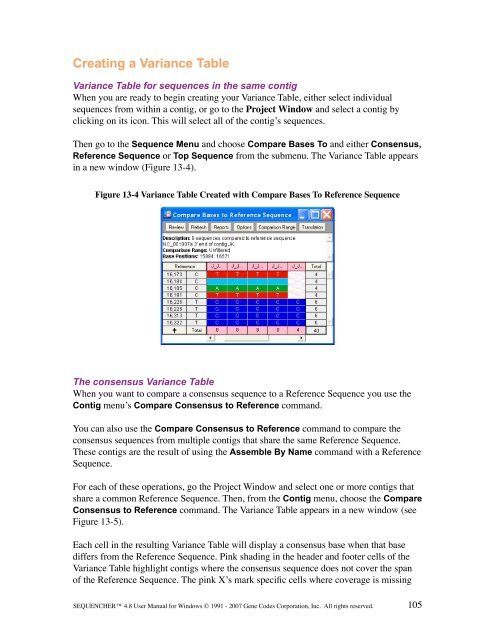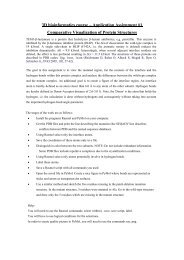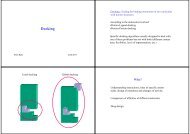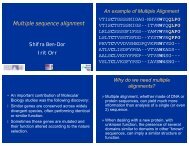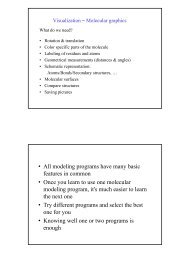Sequencher 4.8 User Manual--PC - Bioinformatics and Biological ...
Sequencher 4.8 User Manual--PC - Bioinformatics and Biological ...
Sequencher 4.8 User Manual--PC - Bioinformatics and Biological ...
You also want an ePaper? Increase the reach of your titles
YUMPU automatically turns print PDFs into web optimized ePapers that Google loves.
Creating a Variance Table<br />
Variance Table for sequences in the same contig<br />
When you are ready to begin creating your Variance Table, either select individual<br />
sequences from within a contig, or go to the Project Window <strong>and</strong> select a contig by<br />
clicking on its icon. This will select all of the contig’s sequences.<br />
Then go to the Sequence Menu <strong>and</strong> choose Compare Bases To <strong>and</strong> either Consensus,<br />
Reference Sequence or Top Sequence from the submenu. The Variance Table appears<br />
in a new window (Figure 13-4).<br />
Figure 13-4 Variance Table Created with Compare Bases To Reference Sequence<br />
The consensus Variance Table<br />
When you want to compare a consensus sequence to a Reference Sequence you use the<br />
Contig menu’s Compare Consensus to Reference comm<strong>and</strong>.<br />
You can also use the Compare Consensus to Reference comm<strong>and</strong> to compare the<br />
consensus sequences from multiple contigs that share the same Reference Sequence.<br />
These contigs are the result of using the Assemble By Name comm<strong>and</strong> with a Reference<br />
Sequence.<br />
For each of these operations, go the Project Window <strong>and</strong> select one or more contigs that<br />
share a common Reference Sequence. Then, from the Contig menu, choose the Compare<br />
Consensus to Reference comm<strong>and</strong>. The Variance Table appears in a new window (see<br />
Figure 13-5).<br />
Each cell in the resulting Variance Table will display a consensus base when that base<br />
differs from the Reference Sequence. Pink shading in the header <strong>and</strong> footer cells of the<br />
Variance Table highlight contigs where the consensus sequence does not cover the span<br />
of the Reference Sequence. The pink X’s mark specific cells where coverage is missing<br />
SEQUENCHER <strong>4.8</strong> <strong>User</strong> <strong>Manual</strong> for Windows © 1991 - 2007 Gene Codes Corporation, Inc. All rights reserved.<br />
105


